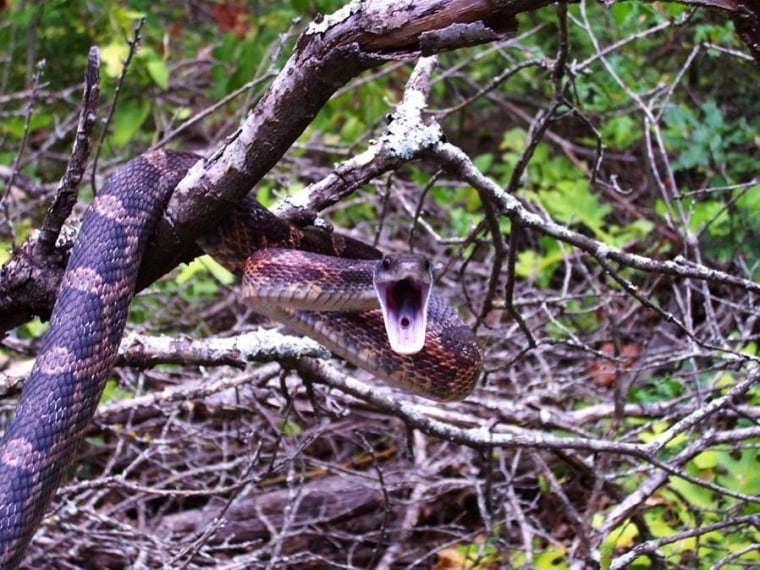By John Roach, NBC News
Several snake species appear to have enough flexibility in what time of day they hunt in order to survive — and perhaps thrive — on a warming planet, according to a recent study.
The result is “contrary to what I had anticipated,” Patrick Weatherhead, a behavioral ecologist at the University of Illinois, told NBC News.
He thought hotter temperatures would force snakes, which use the environment to regulate their body temperature, to spend more time and energy staying cool at the expense of eating and reproducing.
“In fact, what they do when it gets too hot during the day is just switch to being active at night,” he said. “That flexibility means that warmer climates won’t be harmful to them.”
The finding is based on a study of ratsnake populations along a roughly 1,000-mile transect from southern Canada to Texas that was published in the Journal of Thermal Biology.
For species such as ratsnakes, the flexibility to shift to a nocturnal lifestyle, as those in Texas are already doing, could have knock-on effects such as greater predation on birds.
Ratsnakes are so named because they primarily eat rodents, Weatherhead noted, but they are also “very good at finding (bird) nests everywhere from the ground up to the treetops because they are very good climbers.”
When the snakes are active during the day, the mother birds usually see the predators in time to fly away. Though the snakes often get the eggs or hatchlings, the adult usually lives another day and may get another shot at reproducing.
Nesting birds don’t see as well at night, however, and are often sleepy. That makes them more vulnerable to getting eaten by the snakes.
“In the case of endangered species, losing adult females from the population could have really important consequences,” said Weatherhead, who is currently researching that possibility.
Whether warming means snake populations will flourish everywhere is unknown, the researcher cautioned. For example, factors such as habitat fragmentation, special diets or newfound predators could limit snake population growth.
Humans, too, may play a role in curbing snake populations, especially in habitats fragmented by roads.
“If you get a 6-foot snake stretched out on the road, even if a driver wants to avoid them, it can be difficult,” he said. “And drivers often times appear not to want to avoid them.”
— Hat tip to Discovery News
John Roach is a contributing writer for NBC News Digital. To learn more about him, check out his website.
